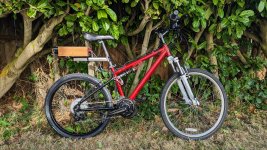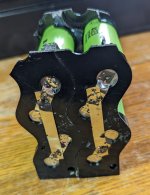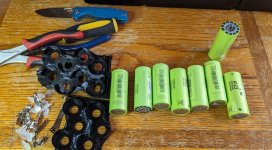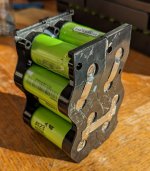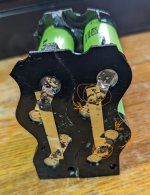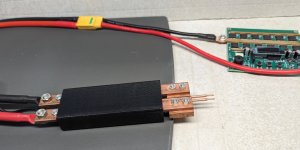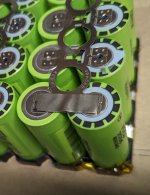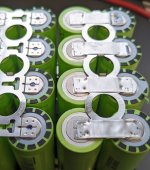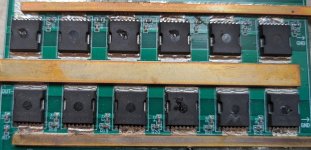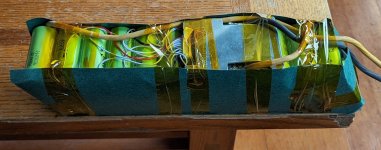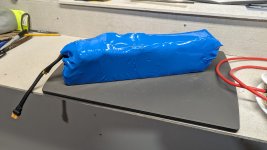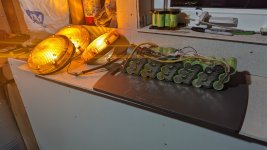MarcoWasRight
1 mW
- Joined
- Nov 2, 2022
- Messages
- 12
So I bought a 12S8P 26650 pack to chop up into thirds for 12V packs. I made the dumb mistake of taking one of the thirds and removing each cell from the nickel plate its spot welded on to. Huge mistake
Obviously one of the main problems is if you're not careful you can rip the nickel off and leave a hole in the cell because the nickel A123 used was quite thick and must have been a very powerful spot welder. Due to the design of the cell its actually quite hard to spot weld pure nickel 0.15mm or 0.20mm thick nickel onto it but I finally found a welder that isn't kWeld expensive that does the job.
But on some of the cells I left the tab on the terminal.....Should I just spot weld on top of that or should I remove all the nickel and start fresh?
Obviously one of the main problems is if you're not careful you can rip the nickel off and leave a hole in the cell because the nickel A123 used was quite thick and must have been a very powerful spot welder. Due to the design of the cell its actually quite hard to spot weld pure nickel 0.15mm or 0.20mm thick nickel onto it but I finally found a welder that isn't kWeld expensive that does the job.
But on some of the cells I left the tab on the terminal.....Should I just spot weld on top of that or should I remove all the nickel and start fresh?



